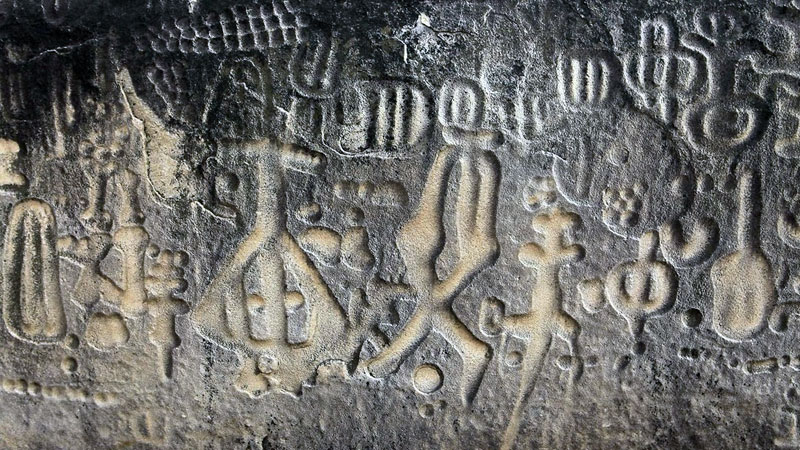
This is a Brazilian archaeological monument that contains several inscriptions and rock drawings carved into the rock.
The monument, located in the municipality of Ingá in the State of Paraíba, is formed by a main stone, which constitutes a vertical rock wall over 50 meters long and around 3 meters high and also by some attached formations full of inscriptions.
According to researchers, this rock formation occupies a total area of approximately 250 m².
The Ingá Stone is also known as Itacoatiara, a word that comes from the Tupi language and means “painted stone” and is located in an area listed as a National Monument by IPHAN since 1944.
Located 109 km from João Pessoa, the place attracts a large number of visitors every year.
Most tourists go to Ingá Stone by car, along the BR 230 and PB 90 roads.
The Ingá Stone Archaeological Site is one of the most famous in Brazil and has a good infrastructure to welcome tourists and travelers and houses a Natural History Museum, which presents visitors with various fossils and ancient indigenous objects found in the region.
Ingá Stone attracts the attention of researchers and tourists because of its mysterious rock images.
To this day, archaeologists do not know the meaning of the low-relief drawings that apparently depict human beings, animals, fruits and constellations such as Orion and the Milky Way.

Some studies have suggested that the inscriptions found on Ingá Stone are similar to drawings found in Chile, which were supposedly made by the people of Easter Island.
But many symbols on the Ingá Stone are strangely similar to those found in Turkey, in ancient Anatolia, the cradle of the Hittite civilization.
Father Inácio Rolim, professor of Theology, Greek and Latin, who lived in the 19th century, was one of the first to defend the idea that the inscriptions have Phoenician origins.
For the president of the Centro Paraibano de Ufologia, Claudio Quintans, the signs could represent an extraterrestrial language and suggest that an alien spacecraft landed in the Ingá Stone region in the distant past.
There are also those who believe that the cave drawings were made by the Inca people.
For some archaeologists, the stone inscriptions are simply teachings that were passed on by elders to new generations in ancient times.
The truth is that, even without understanding the meaning of the monument, the Ingá Stonbe has become a tourist landmark in Paraíba.

The images on the stones show important information about the life of prehistoric man.
Furthermore, the Ingá Stone Archaeological Site was the first in Brazil to be protected by the government, which further highlights its relevance for the country.
It is worth visiting Ingá Stone and the Natural History Museum. It is a tourist itinerary for those who like to explore the mysteries of the world and see fossils and replicas of mummies.
It is important to highlight that the inscriptions on this stone have existed for centuries and, therefore, need to be preserved and treated with respect and care by visitors.




















